Abstract
Groups of immobilized gnotobiotic houseflies, Musca domestica L., were mono-contaminated with graded doses of Salmonella typhimurium, bicontaminated with S. typhimurium and Proteus mirabilis, and multicontaminated with S. typhimurium and a mouse fecal flora. Of 45 flies fed an average of 22 Salmonella cells alone, 26 showed bacterial multiplication, up to 1.4 × 107 in one case. There was a fairly consistent increase in percentage of Salmonella excreters with increasing input, so that all flies given 104 and 105 cells shed Salmonella some time during an observation period of 8 to 13 days. Multiplication, however, reached higher levels in flies given 102 or 103 organisms. A high input was not necessary to produce a high proportion of Salmonella excreters. Among 22 flies given an average of 90 Salmonella cells, multiplication occurred in 17 and 18 became excreters. Antagonism between P. mirabilis and S. typhimurium, which was previously described in the blowfly maggot tract, also occurred in the gut of the adult housefly. With an input of 103 cells each of Salmonella and Proteus, there was a reduction of Salmonella excreters to 27% on the first day and elimination by the second day. With a normal fecal flora which contained no demonstrable P. mirabilis, 37% of the flies were still excreting Salmonella on the fourth day, but not by day 6; among flies fed Salmonella alone at the same input, the organism was excreted by 87% on the first day and 62% on the second day, and outputs continued for at least 8 days. Salmonella was lodged mainly in the mid- and hindgut 3 days after the infective meal, minimizing transmission through vomit. Comparison studies with the common green bottle fly, Phaenicia sericata Mg., showed it to be more resistant than the housefly to establishment and multiplication of S. typhimurium.
Full text
PDF

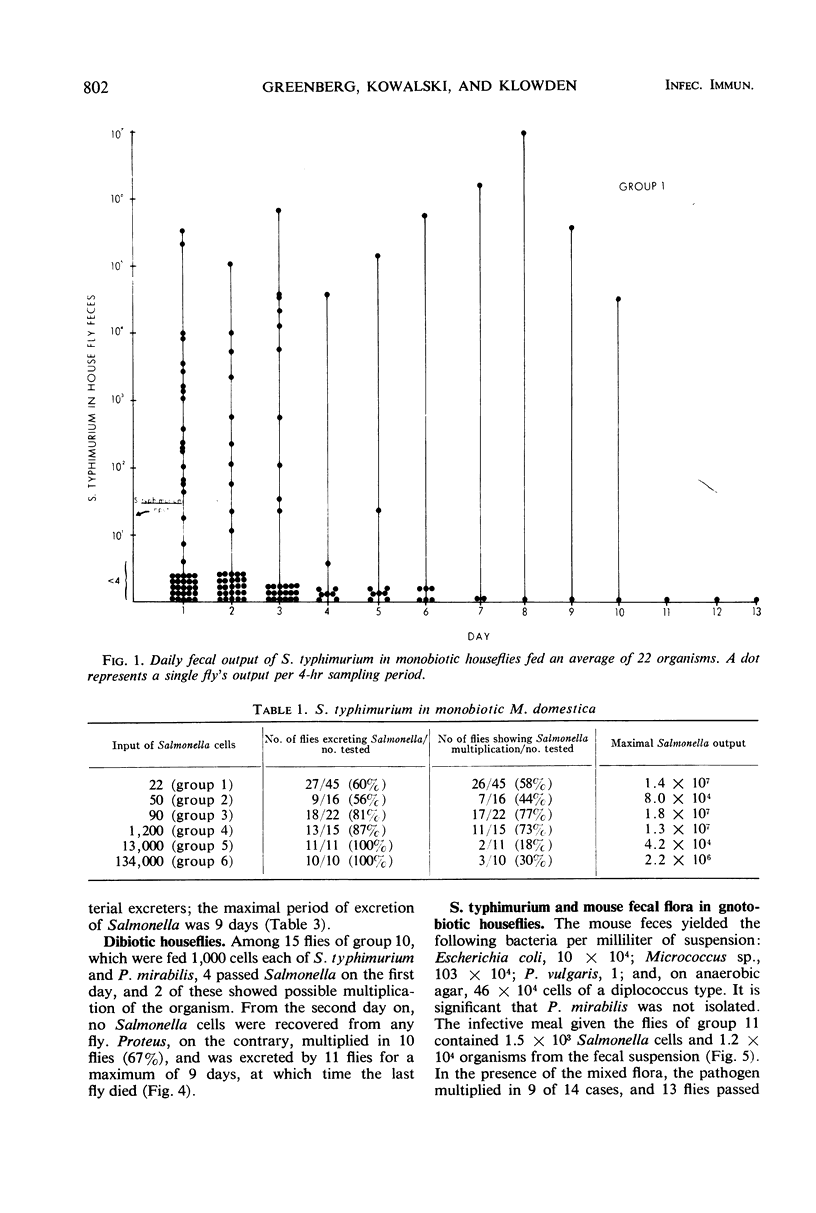
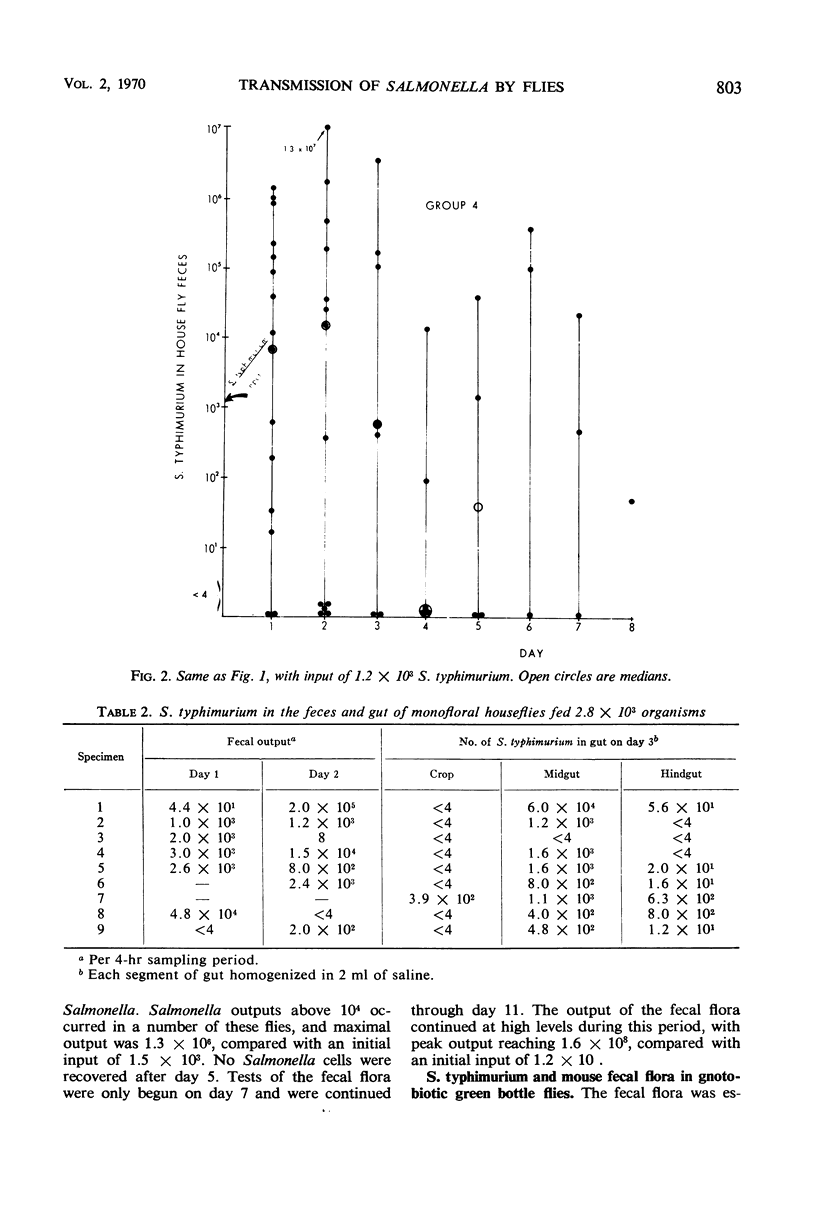
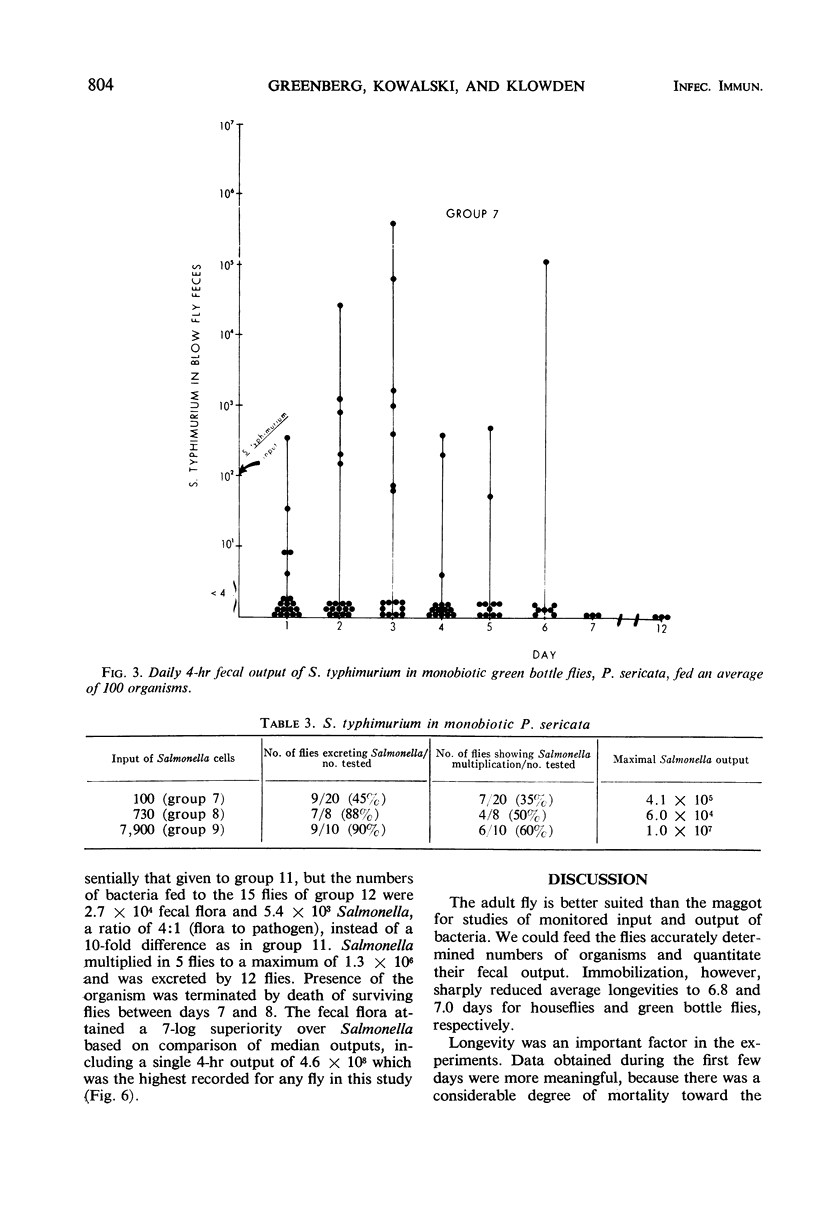
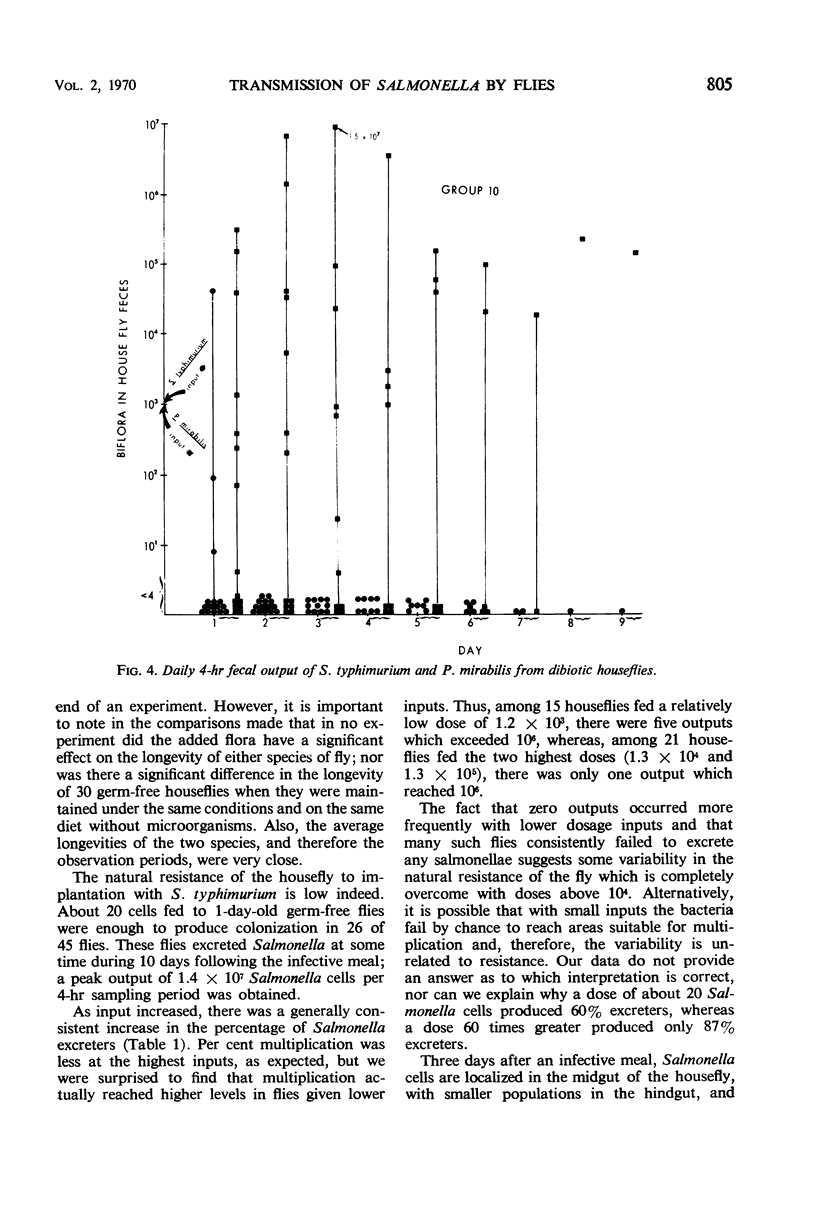


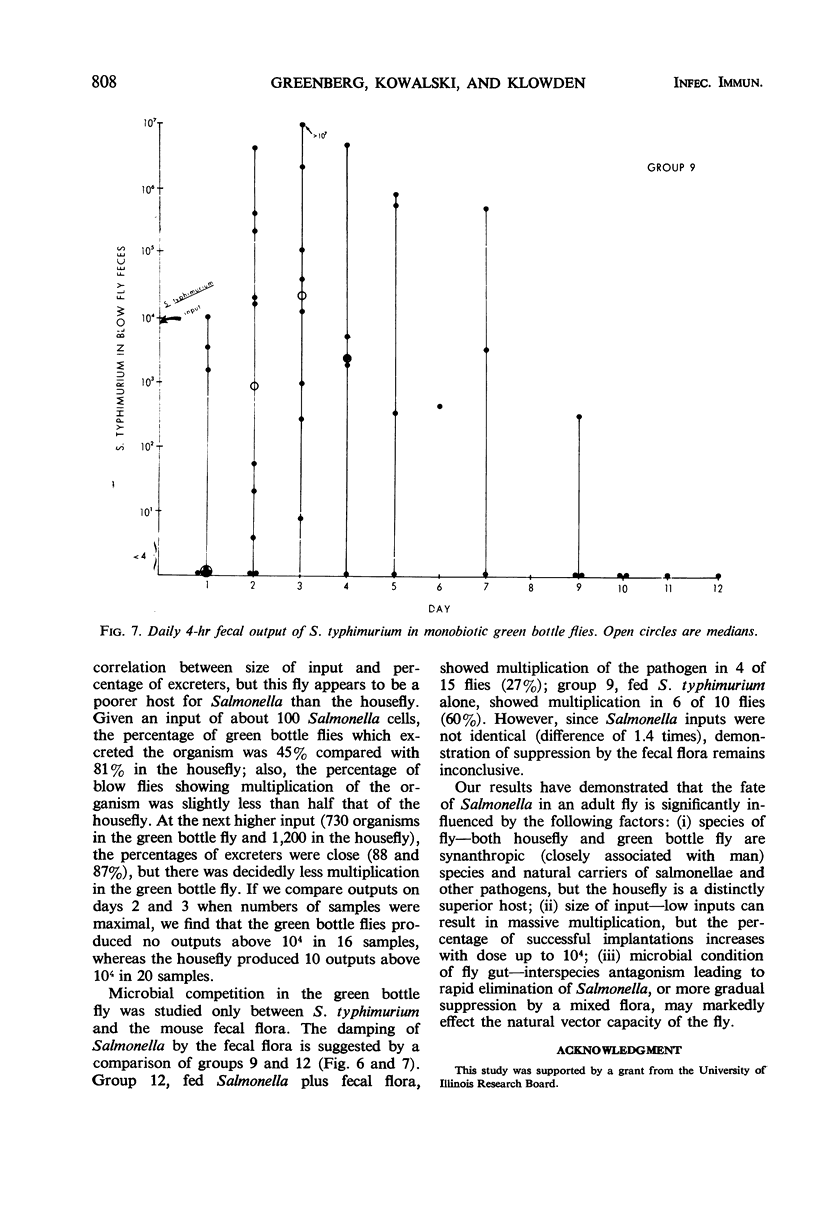

Selected References
These references are in PubMed. This may not be the complete list of references from this article.
- GREENBERG B., MIGGIANO V. Host-contaminant biology of muscoid files. IV. Microbial competition in a blowfly. J Infect Dis. 1963 Jan-Feb;112:37–46. doi: 10.1093/infdis/112.1.37. [DOI] [PubMed] [Google Scholar]
- Greenberg B. Model for destruction of bacteria in the midgut of blow fly maggots. J Med Entomol. 1968 Feb;5(1):31–38. doi: 10.1093/jmedent/5.1.31. [DOI] [PubMed] [Google Scholar]
- Greenberg B. Salmonella suppression by known populations of bacteria in flies. J Bacteriol. 1969 Sep;99(3):629–635. doi: 10.1128/jb.99.3.629-635.1969. [DOI] [PMC free article] [PubMed] [Google Scholar]
- HAWLEY J. E., PENNER L. R., WEDBERG S. E., KULP W. The role of the house fly, Musca domestica, in the multiplication of certain enteric bacteria. Am J Trop Med Hyg. 1951 Sep;31(5):572–582. doi: 10.4269/ajtmh.1951.s1-31.572. [DOI] [PubMed] [Google Scholar]
- MELNICK J. L., PENNER L. R. The survival of poliomyelitis and Coxsackie viruses following their ingestion by flies. J Exp Med. 1952 Sep;96(3):255–271. doi: 10.1084/jem.96.3.255. [DOI] [PMC free article] [PubMed] [Google Scholar]


